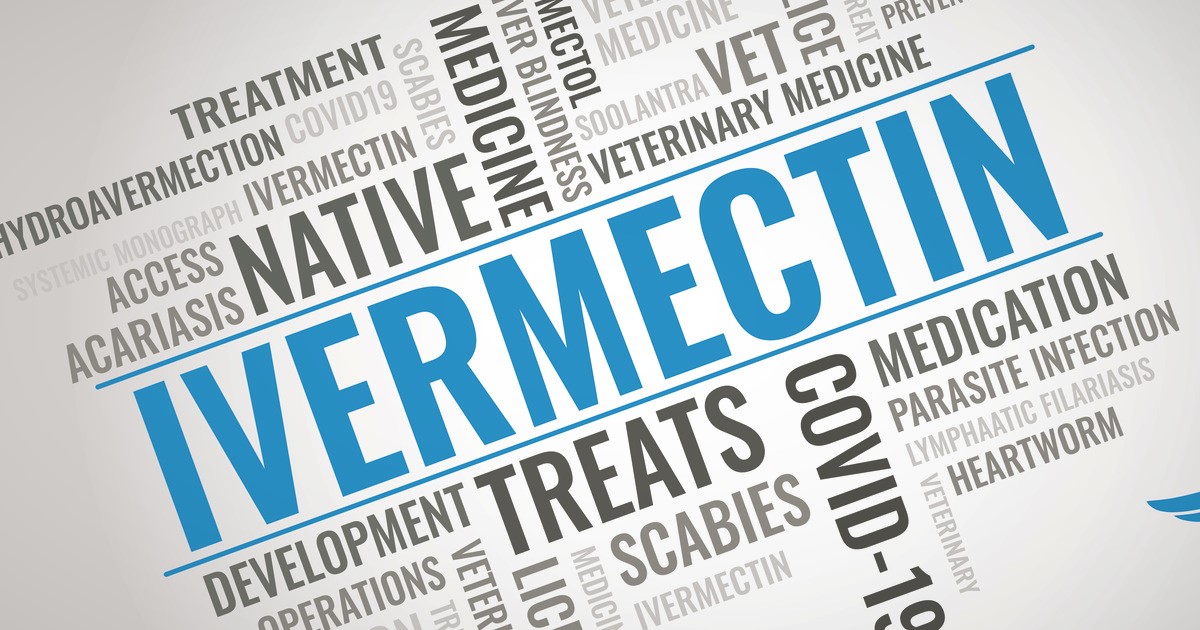Introduction
Ivermectin is an FDA-approved parasitic worm treatment used to treat intestinal strongyloidiasis (a chronic infection), onchocerciasis (also known as river blindness), and other parasitic infections. It is also approved for use as a topical treatment for head lice and skin conditions like rosacea. It has also been demonstrated to have anti-viral activity against a wide variety of viruses.
It has been used safely by over 200 million people worldwide since the 1970s, and its contribution to saving human lives has been recognized with the 2015 Nobel Prize in Physiology or Medicine.

Ivermectin shot to prominence in 2020 after an Australian academic team discovered its antiviral potential (I won’t name the virus here to avoid being penalized by search engine algorithms). Following that report and further research, I have included Ivermectin in the list of drugs and supplements with potential antiviral activity for May 2020. The article, which was published on March 13th, 2020, can be found on this website.
I made the hasty decision to include this drug on the list of drugs with potential against the virus that caused the recent pandemic, as I was swayed by previous research on this drug. And it appears that I was correct in my assessment, given all of the positive results that have been observed after Ivermectin has been used to treat viral infections in recent years.
Now, I’d like to make a similar claim about Ivermectin’s anti-cancer potential. According to the scientific literature, Ivermectin is one of the drugs at the top of the list of repurposed drugs in oncology due to its exceptional ability to fight cancer.
Indeed, this is a drug that has stood out in my scientific literature research since 2014. At the time, there was little information available on the use of Ivermectin in oncology – only laboratory research. In terms of using Ivermectin outside of its traditional applications, the most relevant source of information I found at the time was by Dr. Simon Yu, an MD on Internal Medicine from the United States who was intensively using Ivermectin to cure autism in children.
This drug has occasionally come up in our discussions over the years, either in the Blog or in the Forum section, in the context of cancer and, more recently, in virus-related discussions. However, I never allotted time to discuss the drug in depth because there was no case report published in a peer-reviewed journal demonstrating the drug’s potential against cancer in real life, beyond academic research in the lab. Not to the best of my knowledge.
Fortunately, the medical and scientific communities have paid increased attention to this drug’s anti-cancer properties in recent years. In this context, a recent article with multiple positive case reports demonstrating that Ivermectin can improve the lives of cancer patients was published. As a result, now is an excellent time to address this drug, with the hope that many more cases like these will follow.
Ivermectin in Oncology – First Results in Humans
Source 1: When looking for new treatment options in oncology, it is best to look for two important aspects: clear science and at least a preliminary indication that the treatment option has been tried in humans with some success. In other words, we seek good knowledge and activity signals.
While the science behind Ivermectin is strong, there have been no case reports published in the scientific literature in recent years to support scientific expectations.
Fortunately, a paper was recently published in which Ivermectin was used as part of a drug cocktail in patients who had no other effective treatment options. In this paper, three cases are discussed, and in each of them, benefits have been observed after only a low dose of Ivermectin was added:
Case 1: A 69-year-old woman with invasive breast cancer underwent a partial mastectomy on her left breast, but bone metastases and pleural dissemination developed. Her doctors decided to switch to a combination of dichloroacetate, omeprazole, and tamoxifen after conventional treatments became less effective and caused intolerable side effects. This temporarily alleviated her symptoms (bone pain, shortness of breath, and general fatigue), but not completely. The pleural effusion was stabilized after adding a 12 mg ivermectin tablet per day, and the tumor marker CEA began to decline from 12.9 to 7.3, and cancer antigen 15-3 (CA15-3) from 302.3 to 229.4 in three months. Please keep in mind that, from what I understand, Ivermectin has only been used once per week here.
Case 2: A 54-year-old man was diagnosed with osteosarcoma of the right femur. Lung lymph node metastases and pleural dissemination appeared while on conventional treatments. He couldn’t walk out of his house at the time due to shortness of breath and severe pain. On Day 1 and Day 4, his doctors decided to switch to a combination of dichloroacetate, omeprazole, tamoxifen, and ivermectin at a dose of 12 mg twice a week. After only one cycle, all of his symptoms had significantly improved, and he was able to walk to the clinic on his own.
Case 3: A 54-year-old man was diagnosed with adenocarcinoma of the right lung. While the chemotherapy was initially effective, it gradually lost effectiveness as metastases (bone and brain) appeared. His doctors decided to switch him to a 12-mg dose of dichloroacetate, omeprazole, and ivermectin once a week. His symptoms (cough, shortness of breath, pain, and loss of appetite) did not improve. The symptoms were relieved after increasing the dose of Ivermectin to 12 mg twice a week.
While the results presented in this report are not spectacular, they do show that Ivermectin has the potential to improve the lives of cancer patients.
The question is what we can do to maximize its worth. After reading the report above, one thing becomes immediately clear: the dose and frequency of administration used were extremely conservative. The other point is that delivering Ivermectin more specifically to the tumor via intravenous or rectal administration may maximize its effects.
Source 2: After further research, I discovered another important report on the use of high-dose Ivermectin in paediatric patients with refractory AML (Ref.). In this case, a daily dose of 1 mg/kg was used for six months with no major side effects and benefits observed.
Source 3: Dr. Simon Yu adds, “If you have Medically Unexplained Symptoms (MUS) or cancer, you may consider trying Ivermectin, a deworming medication.” Dr. Simon Yu stated in another post, “I have experienced some dramatic responses for medically unexplained symptoms and some cancer cases.” “Monthly de-worming for medically unexplained symptoms or cancer patients may be a better solution,” he added. Dr. Simon Yu also liked to combine Ivermectin with Praziquantel, another antiparasitic medication.
Safety & Pharmacokinetics
- Ivermectin provides a high margin of safety.
- The half-life of ivermectin in humans is 12–36 hours, while metabolites may persist for up to three days.
- The peak plasma level seems to be achieved after about 4 hours, when taken orally.
- In line with the half-time, accumulation of ivermectin given every fourth day is minimal.
- While in normal conditions it will not cross the blood-brain barrier, hyperinflammation or drugs influencing P-gp may change that making BBB leaky. Long term administration of the drug may also influence that. Therfore, it is always best to increase the dose to the daily target dose step by step while observing if any side effects occurs.
- Best administered with food.
Application and Dose*
Ivermectin has been administered orally, intravenously, and rectally, according to the scientific literature.
Nebulized Ivermectin has also been proposed for direct delivery to the lungs, which could make sense for patients with lung tumors. In this case, the authors proposed that Ivermectin be dissolved in ethanol, as described in the article. This is not a novel concept to be discussed on this blog, as we have previously discussed similar concepts such as 3BP.
The best daily dose of Ivermectin as a repurposed drug in oncology has yet to be determined. As a result, before reaching a conclusion, we must examine multiple references to determine the
- a first reference point when it comes to the use of Ivermectin, is dr. Simon Yu. To my understanding some of his slides are suggesting that a common anti parasitic dose in his view is 12 mg 3-4x/daily for 10 up to 30 days. I would assume this is for a person of 70kg, that would indicate a 0.7 mg/kg daily dose.
- on the other hand, the study referenced above, showing positive results in oncology, based on a daily dose of 12 mg, given one to two times per week.
- indeed, a recent systematic review, including a meta-analysis, has shown that adverse effects following single-dose treatment with up to 0.8 mg/kg of Ivermectin occur without significant differences of frequency or intensity to those at regular currently approved doses.
- here is a paper published in The Lancet in 1994, where patients have been treated with Ivermectin doses up to 1.6mg/kg given as subsequent injections at weekly or biweekly intervals. ” No clinical adverse effects were noted in any of the patients, including the one who received ivermectin for 12 weeks. In fact, many reported improved sleep, less depression, and better bowel and bladder function during the trial.”
- a recent review on Ivermectin safety, also states that there is “no difference in the severity of the adverse events between standard (up to 0.4 mg/kg) and higher doses of ivermectin. Organ system involvement only showed an increase in ocular events in the higher-dose group in one trial for the treatment of onchocerciasis, all of them transient and mild to moderate in intensity.”
- another extensive study in humans using an Ivermectin dose of 0.6 mg/kg/day for 5 days, reported on both the safety and possible efficacy of high dose ivermectin as an anti viral.
- finally, Ivermectin has been used at a dose as high as 1 mg/kg in pedriatic patinet wih AML, for six months, with no major side effect.
Based on the above, I would consider using
- a dose of 0.6 mg to 1 mg/kg/day,
- taken once a day (single dose),
- with food
If active cancer, I would take it in one of the following ways:
- 5 days ON and 2 days OFF, or
- 20 days ON and 10 days OFF, or
- if highly active cancer, I would take it continuously, at least in the first months
In the absence of active cancer, I would approach it as follows: Repeat this for 10 days ON and 20 days OFF during the second month, so that two cycles are performed one after the other. This is something I would do twice a year.
I like the idea of combining it with another antiparasitic, such as Praziquantel, as Dr. Simon Yu frequently does.
Nonetheless, it should be noted that the statement on the drug’s safety at normal doses is based on a very large set of data related to its use in humans, whereas the safety at higher doses is based on a very limited set of data.
As a result, I would never start Ivermectin at the target dose right away. Instead, if the target dose is 1 mg/kg/day, I would begin with 0.1 mg/kg/day and gradually increase to 1 mg/kg/day over a few/several weeks. This method will aid in the detection of potential side effects. And all with the help of a medical doctor.





